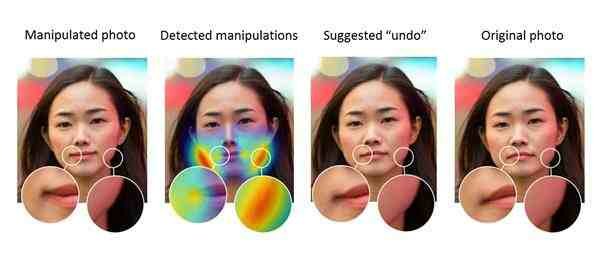
Adobe’s latest technology can detect whether a portrait photo has been modified, or even restore the P image, so that the master is “original”.
Want to make a photo look better, nothing is more professional than Photoshop. Microdermabrasion, liquefaction, coloring, as long as you master these tools, you can “degenerate into magic” in minutes, become a master of fraud.
The picture of P is very good, but it also causes the proliferation of fake pictures, and it is increasingly difficult to distinguish whether the photos have been modified. Especially in image forensics, even professionals need complicated procedures to confirm the authenticity of a photo.
As a master of image editing, Adobe wants to make this process easier and more accurate through deep learning techniques. They launched an “anti-PS” tool that can detect if a portrait photo has been modified. This technology can even restore the P image, so that the master is “original.”

Don’t say “no PS traces”
Adobe is the authority of the P-picture world, and it is naturally handy to do the “anti-P map” work. Last year they studied tampering with AI to identify tampering images that recognize three types of modifications: splicing, copying, and deleting. Each time the picture is modified, it will leave traces, but these changes are difficult to detect by the human eye. After zooming in on the image, you can see sharp cutting edges, excessively smooth planes, and unnatural noise.
The researchers trained a deep learning neural network to identify image processing. The first method is to identify changes in RGB, and the second is to identify noise. This technology combines these two methods for more accurate identification.

Put the face of P back to the original shape
This anti-PS technology is different, mainly to identify the liquefaction process in portrait photos. Previously, Adobe introduced the “Face Recognition Liquefaction” tool in Photoshop. The software can automatically identify the facial features and adjust them separately. The anti-PS research is based on this tool.
The researchers wrote a Photoshop script that allowed the system to generate a large number of photos that were processed by the Face Recognition Liquefaction tool and were adorned with designer-modified images.
The accuracy of the trained neural network is amazing. The researchers used the original pictures and the liquefied pictures to distinguish the average person. The recognition rate of the person is only 53%, which is only a little more than the random guess, and the recognition rate of the machine reaches 99%. In the experiment, the technology can also restore the modified image to the original image, but still can not make a general “restore” button.
Eliminate false information, only technology is not enough
There have also been photo editing tools that have done the “ugly face” function. MAKEAPP claims to use artificial intelligence technology to erase the makeup of any person in the photo to achieve the “one button remover” purpose. This feature is more useful, and Adobe is obviously not just fun.
This technology was jointly researched by Adobe and the University of California at Berkeley to make image forensics easier and more accurate. Adobe wrote in a blog post: “Adobe provides tools for users to turn their ideas into reality and strive to unleash their imagination. At the same time, we are also doing some research to help validate the numbers created using our products. Whether the media is real and identifies and blocks abuse.”
Artificial intelligence technology makes image forensics easier to implement, but Adobe also emphasizes that eliminating false news is far from simple. Regulatory systems, confidence-building mechanisms, and improved digital content distribution specifications are all indispensable. What Adobe can do is simply to advance the process technically.






